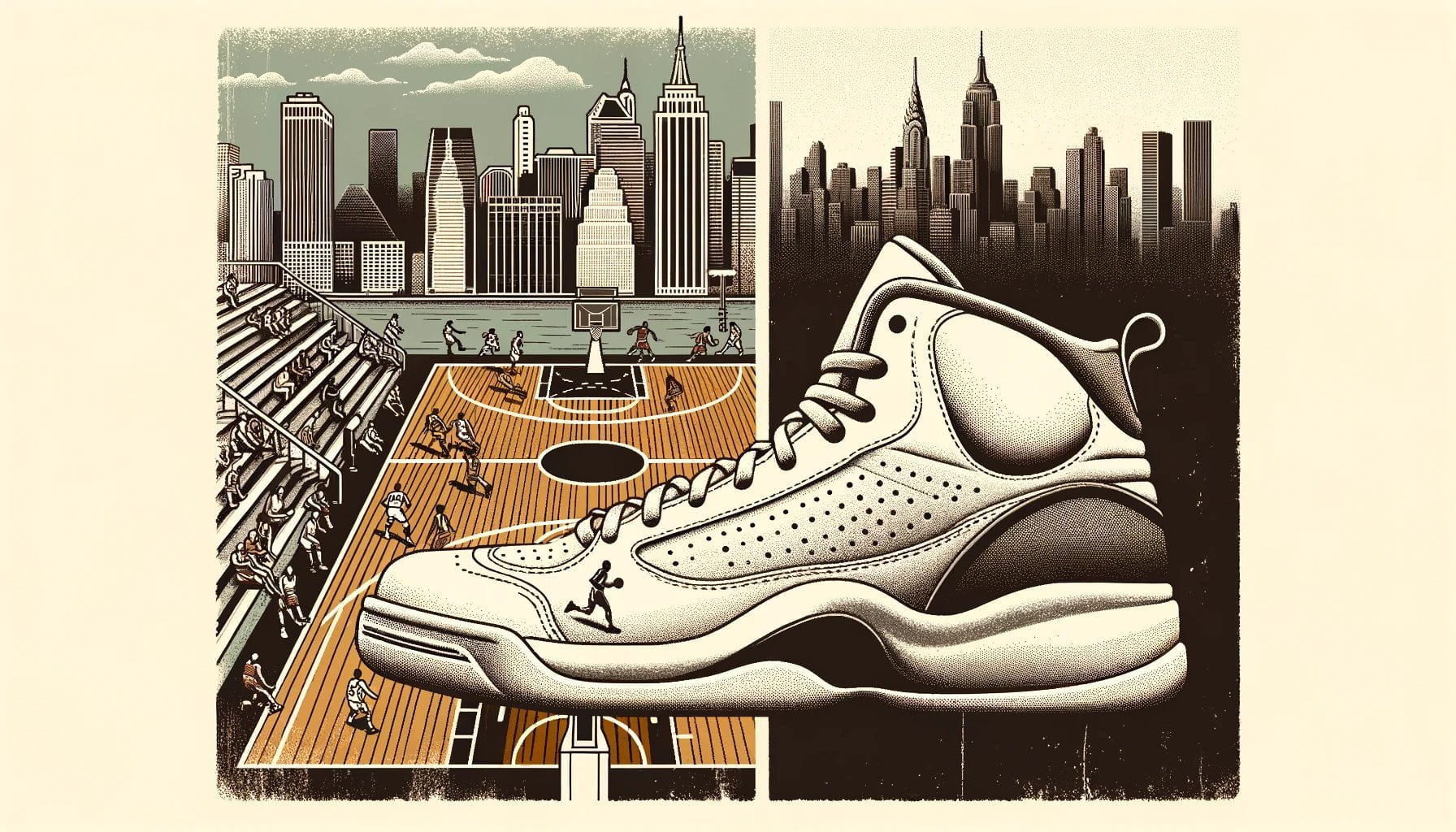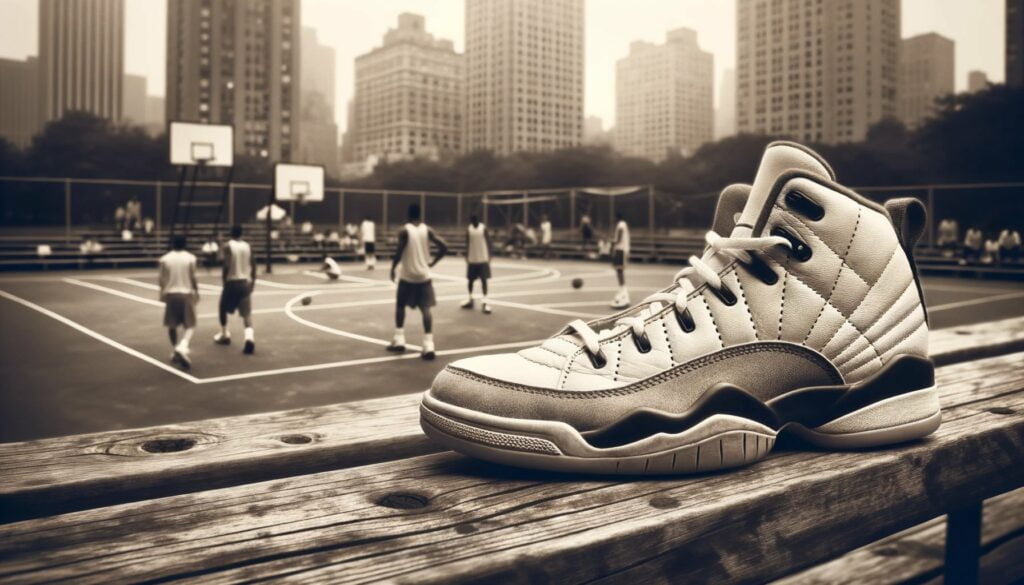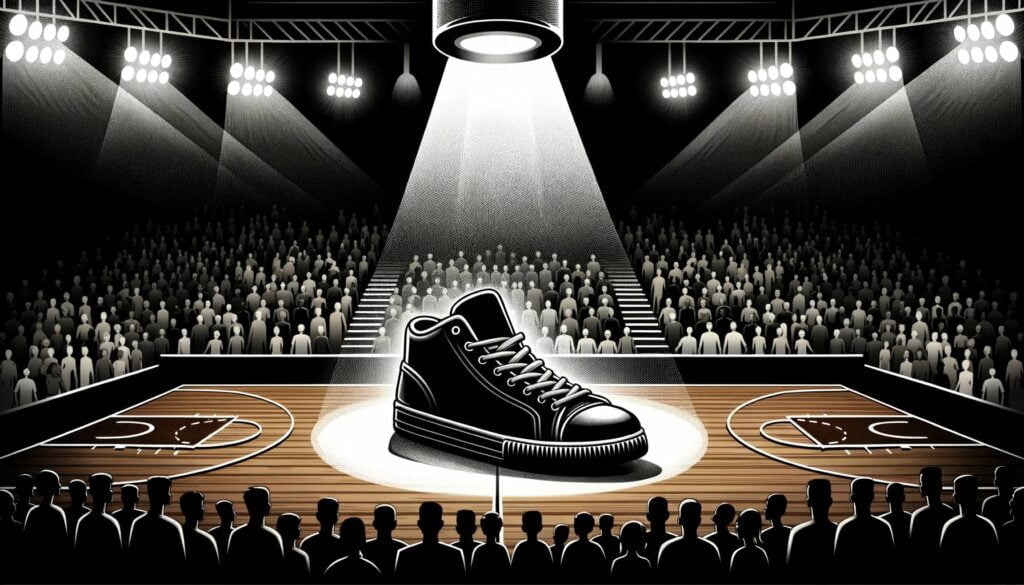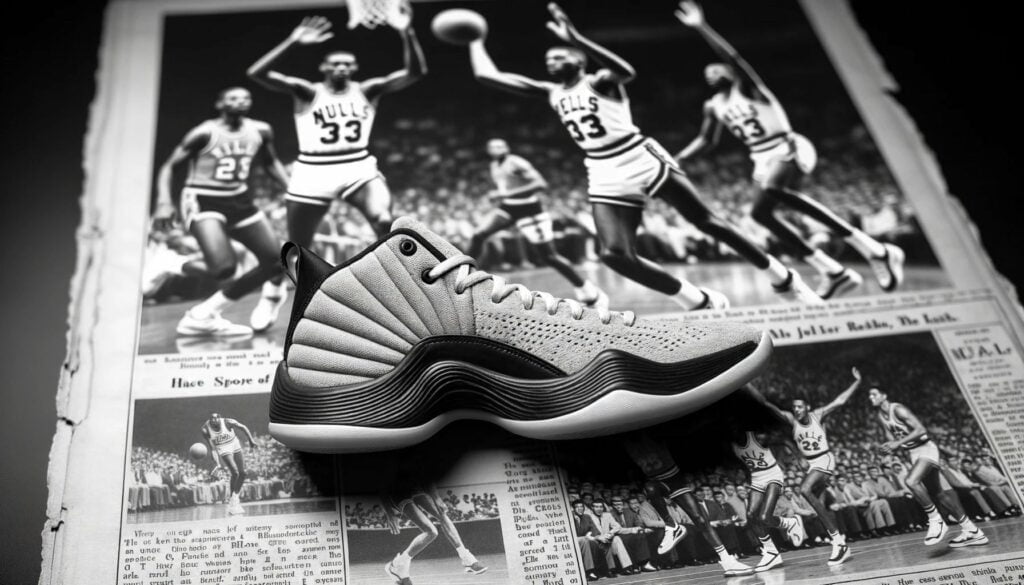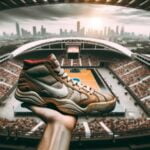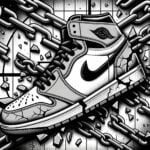Throughout the rich and captivating history of the NBA, there have been numerous controversies and milestones that have shaped the game we know and love today. From rule changes to iconic players, the league has always been at the forefront of innovation and transformation. However, one particular piece of footwear stands out as a pivotal moment in the sport’s evolution. Curious minds of basketball enthusiasts yearn to uncover the answer to the burning question: what was the first shoe banned by the NBA? Delving into the depths of basketball lore, we unveil the fascinating story behind this historic piece of footwear and its significant impact on the game.
What Was the First Shoe Banned by the NBA?
The NBA’s history is filled with countless memorable moments, iconic players, and game-changing innovations. However, there is one story that stands out among the rest – the ban on the first shoe in NBA history. What was the first shoe banned by the NBA? Let’s delve into this intriguing tale and unravel the historic footwear that shook up the basketball world.
The Era of the Air Jordan
In the early 1980s, a young basketball prodigy named Michael Jordan burst onto the scene, showcasing incredible talent and flair. It was during this period that Nike seized the opportunity to partner with Jordan and create a revolutionary basketball shoe line – the Air Jordan.
The Air Jordan 1 and the NBA Ban
The first Air Jordan basketball shoes, known as the Air Jordan 1, were introduced to the world in 1984. Featuring a sleek black and red design and adorned with the iconic “Jumpman” logo, these shoes instantly caught the attention of basketball enthusiasts. However, their journey in the NBA was not without controversy.
The NBA banned the Air Jordan 1 for not adhering to the league’s “uniformity of uniform rule.” This rule stated that players must wear shoes that align with their team’s colors and feature minimal additional design elements. The league believed that Jordan’s black and red shoes deviated from this standard.
Jordan’s Defiance and the Fines
Despite the ban, Michael Jordan defiantly wore the Air Jordan 1 during games, fully aware of the consequences. The NBA responded by imposing fines of $5,000 per game on Jordan for violating the uniform regulations. However, Jordan’s rebellious act only added to the allure and mystique surrounding the banned shoe.
The True Culprit: Nike Air Ship
Interestingly, although the Air Jordan 1 is often hailed as the first shoe banned by the NBA, it was actually the Nike Air Ship that initially drew the league’s ire. Nike marketed the Air Jordan 1 as a shoe that the NBA banned, contributing to its status as a cultural icon. Nevertheless, the ban on the Air Jordan 1 played a significant role in shaping its popularity and cementing its legendary status.
The Impact and Legacy
The ban on the Air Jordan 1 sparked a sense of exclusivity and desire among consumers. Michael Jordan’s defiance and the subsequent fines propelled it into the realm of cultural phenomena. The Air Jordan line became a symbol of style, success, and rebelliousness, transcending basketball and leaving an indelible mark on popular culture.
Other Banned Items in the NBA
While the Air Jordan 1 remains the most well-known banned shoe in NBA history, it is not the only one. The NBA has implemented regulations regarding various items, including brand logos on shoes, black carbon fiber masks, ninja headbands, and headbands with upside-down logos.
Conclusion
In conclusion, the first shoe banned by the NBA was the Air Jordan 1. With its bold design and defiance of uniform regulations, it quickly became an iconic symbol of style and rebellion. Although the ban was enforced due to the Nike Air Ship, it was the Air Jordan 1 that captured the imagination of basketball fans worldwide. The legacy of this banned shoe continues to live on, evoking sentiments of nostalgia and admiration for the game that transcends the court.
Basketball is a highly energetic and intense sport that requires the right gear for optimum performance. When it comes to the game, having the first basketball shoes can make all the difference in your performance on the court. Whether you’re a seasoned player or just starting out, investing in quality basketball shoes is a must. Don’t settle for anything less than the best when it comes to your game. Click here to explore a selection of top-notch basketball shoes designed for ultimate comfort, support, and style. Give yourself the competitive edge you deserve by stepping up your game with the first basketball shoes.
Reasons for the ban
When it comes to basketball, shoes are not just about fashion or comfort. They play a crucial role in the performance and safety of players on the court. Throughout the history of the NBA, certain shoes have faced bans due to various reasons, from not adhering to uniformity rules to providing an unfair advantage. In this article, we will delve into the reasons behind the ban of the first shoe in NBA history, shedding light on the historic footwear that ignited debates and shaped the game we know today.
The Air Jordan’s Rise and Ban:
One of the most iconic names in basketball and sneaker culture, Michael Jordan, made waves with the release of the Air Jordan basketball shoes in 1985. The sleek design and cutting-edge technology made them an instant hit among athletes and fans alike. However, their rise to fame came with controversy.
The NBA, with its strict regulations on uniformity, deemed the Air Jordan shoes a violation of the league’s “uniformity of uniform rule.” This rule mandated that all players wear basketball sneakers that adhered to certain standards. The Air Jordan shoes, with their distinct color scheme and lack of white as a dominant color, did not conform to these regulations. As a result, the NBA prohibited players from wearing the Air Jordans during games.
Unintended Consequences:
Surprisingly, the ban on Air Jordan shoes had unintended consequences. Instead of dampening their appeal, the ban actually increased the shoes’ desirability and exclusivity among sneaker enthusiasts. It sparked curiosity and a sense of rebellion; players and fans began to view Michael Jordan as a maverick, someone who challenged the norms and rules of the game.
APL Concept 1: An Unfair Advantage:
Fast-forward to 2010, and another shoe faced the NBA ban hammer: the APL Concept 1. These shoes introduced a revolutionary technology called Load ‘N Launch, which was claimed to enhance a player’s vertical leap by providing an unfair competitive advantage. The NBA determined that the performance boost provided by the APL Concept 1 shoes gave athletes an edge that undermined fair competition. Consequently, the league banned these shoes from being worn during games.
The ban of both the Air Jordan and APL Concept 1 shoes had a significant impact on the sneaker industry as a whole. It created a sense of exclusivity and hype around these banned shoes, turning them into highly sought-after collector’s items.
Influence on Footwear Rules:
The ban on Air Jordan and APL Concept 1 shoes spurred discussions and debates regarding performance-enhancing technology in footwear. It forced the NBA to reevaluate and refine their regulations for basketball shoes. The bans influenced the current shoe rules in the league, as changes were made to ensure fairness and maintain the integrity of the game.
Conclusion:
The first shoe banned by the NBA showcased the intersection of technology, culture, and history within the world of basketball. The Air Jordan’s ban drew attention to Michael Jordan as a trailblazer, while the APL Concept 1’s ban ignited debates about fairness and a level playing field. Both instances influenced the sneaker industry and triggered changes in the NBA’s footwear regulations. Ultimately, the bans highlighted the role of shoes in basketball and their impact on the game.
Impact and Legacy of the Banned Shoe
The first shoe banned by the NBA holds a special place in basketball history. It not only challenged the league’s regulations but also became a symbol of rebellion and exclusivity. In this article, we will delve into the impact and legacy of this historic footwear, shedding light on its significance and how it shaped the sneaker industry.
The Banning of Air Jordan Shoes
In 1985, the NBA banned the Air Jordan shoes, marking the first time a shoe had been prohibited by the league. The controversy arose because the initial pair of Jordans designed by Nike featured black and red colors, which clashed with the league’s strict color regulations. According to NBA rules, shoes worn on the court had to be predominantly white. This posed a problem for Michael Jordan, who had already garnered significant attention as a rising star.
Although the NBA had a promotional deal with Adidas at the time, Michael Jordan continued to wear the black and red Air Jordans. Each time he did so, he had to pay a fine of $5,000. This defiance not only highlighted Jordan’s confidence in his own brand but also elevated the shoes’ desirability among fans. It transformed the Air Jordans from a mere basketball sneaker into a cultural phenomenon.
The Impact on Michael Jordan’s Brand
The ban on Air Jordan shoes inadvertently catapulted Michael Jordan and his brand to greater heights. It established him as a rebel figure in the eyes of many fans, as he was willing to pay fines for wearing shoes that the league deemed unacceptable. The controversy surrounding the banned shoes generated immense media attention and increased their popularity.
The Air Jordans became synonymous with Michael Jordan’s persona and style of play. They embodied his creativity, innovation, and daring nature on the court. The shoes’ unique design and the narrative of rebellion associated with them captured the imagination of sneaker enthusiasts, making them highly sought-after collector’s items to this day.
Evolution of NBA Shoe Regulations
The banning of Air Jordan shoes in 1985 prompted changes in NBA shoe regulations. The league implemented the “uniformity of uniform rule,” requiring players to wear shoes that met specific color requirements. This rule aimed to maintain a consistent visual aesthetic on the court and prevent individual players from standing out due to their footwear.
While the initial reaction to the ban on Air Jordans was mixed, with some fans supporting Michael Jordan’s defiance, it ultimately sparked discussions and debates about the role of footwear in the game. This incident highlighted the potential impact of basketball shoes on performance and how they contributed to player personality and branding.
The Legacy of the Banned Shoe
The ban on Air Jordan shoes profoundly impacted the sneaker industry as a whole. It paved the way for a new era of collaboration between athletes, brands, and designers. Sneakers transcended their functional purpose and became a form of self-expression and fashion statement. The Air Jordans became a symbol of success, status, and authenticity.
Today, the legacy of the first banned shoe lives on in the continued popularity of Air Jordan sneakers and their cultural significance. Sneaker enthusiasts and collectors eagerly await each new release, and the resale market for Air Jordans remains incredibly lucrative. The banned shoe sparked a revolution, transforming basketball footwear into an industry that combines athleticism, style, and storytelling.
In conclusion, the ban on the first shoe by the NBA, the Air Jordan, had a profound impact on the game of basketball and the sneaker industry. It not only elevated Michael Jordan’s brand and created a cultural phenomenon but also initiated discussions about footwear regulations in professional sports. The legacy of the banned shoe lives on, reminding us of its impact on the sport’s history, the evolution of sneaker culture, and the power of individuality in a team-oriented game.
FAQ
Question 1
What was the first shoe banned by the NBA?
Answer 1
The first shoe banned by the NBA was the Air Jordan basketball shoes, released in 1985.
Question 2
Why were Air Jordan shoes banned by the NBA?
Answer 2
Air Jordan shoes were banned by the NBA due to not meeting the league’s color regulations. The first pair of Jordans were black and red, which caused controversy as shoes worn on the court had to be mostly white.
Question 3
Did Michael Jordan continue to wear the banned Air Jordan shoes?
Answer 3
Yes, Michael Jordan continued to wear the banned Air Jordan shoes despite the NBA’s ban. He paid a fine of $5,000 each time he did.
Question 4
What impact did the ban have on the Air Jordan brand and the sneaker industry?
Answer 4
The ban of Air Jordan shoes from the NBA increased their desirability and exclusivity among sneaker enthusiasts. It brought attention to Michael Jordan, and the unique design of the Air Jordan shoes became associated with his brand. The ban had a significant impact on the Air Jordan brand and the sneaker industry as a whole.
Question 5
What were the regulations that led to the ban on Air Jordan shoes?
Answer 5
The NBA’s “uniformity of uniform rule” required all players to wear basketball sneakers that adhered to certain standards, including color regulations. The Air Jordan shoes violated these regulations, leading to their ban.
- Sept 31 Myth: Unveiling Calendar Secrets - March 18, 2025
- How Long & Till December 18, 2025: Accurate Countdown Guide - March 18, 2025
- Discover Japanese Artists: A Complete History - March 18, 2025
